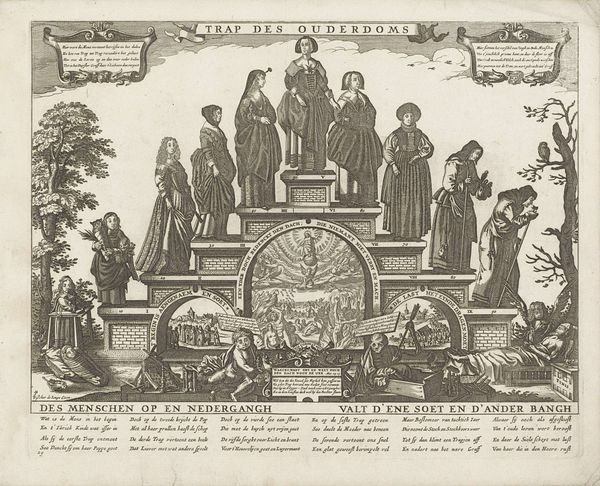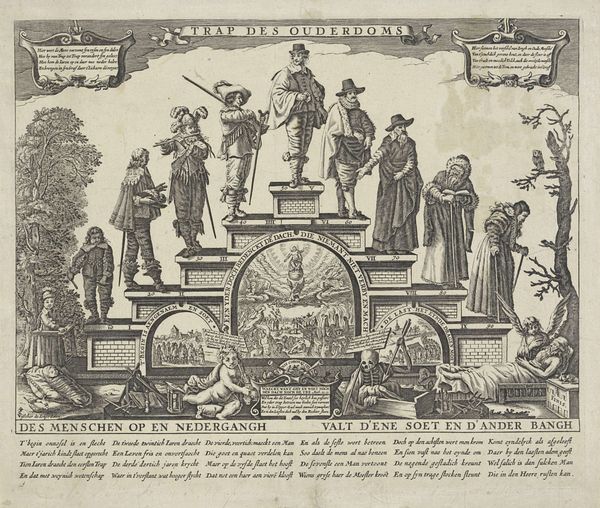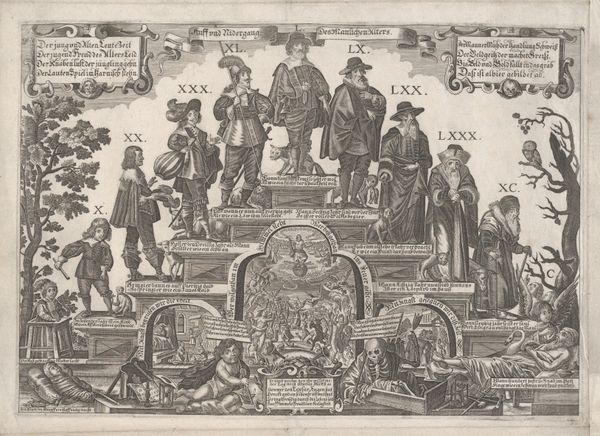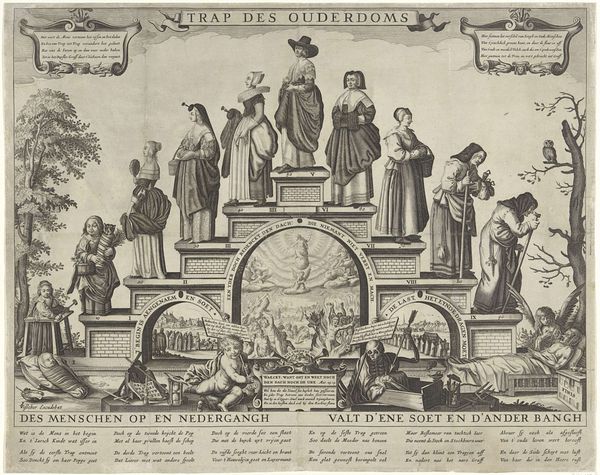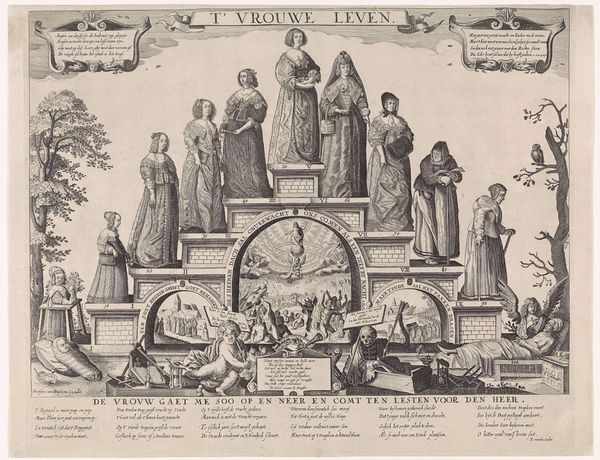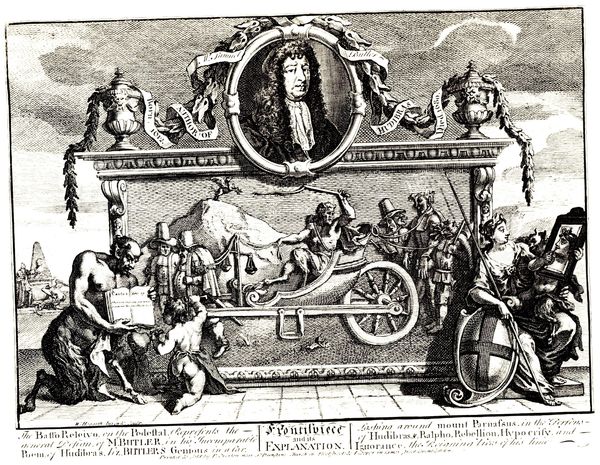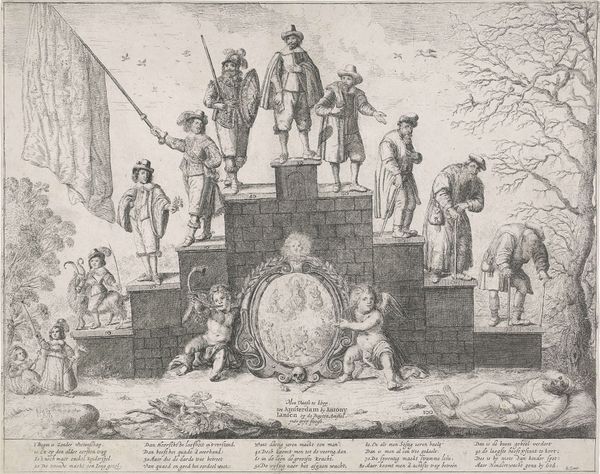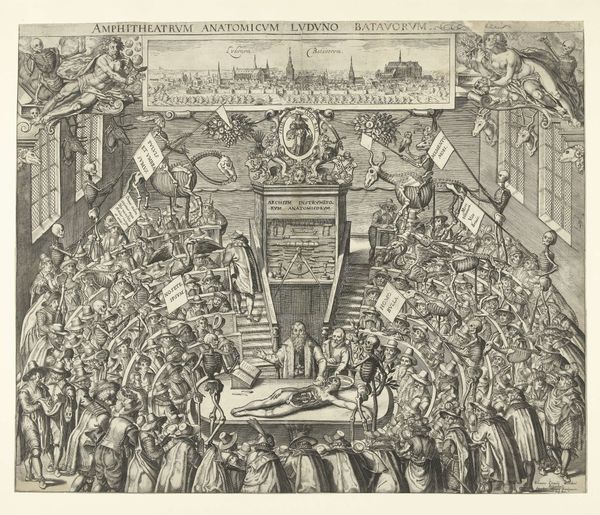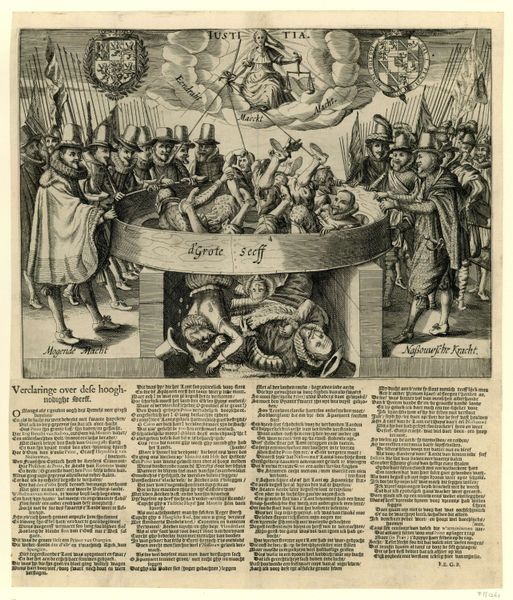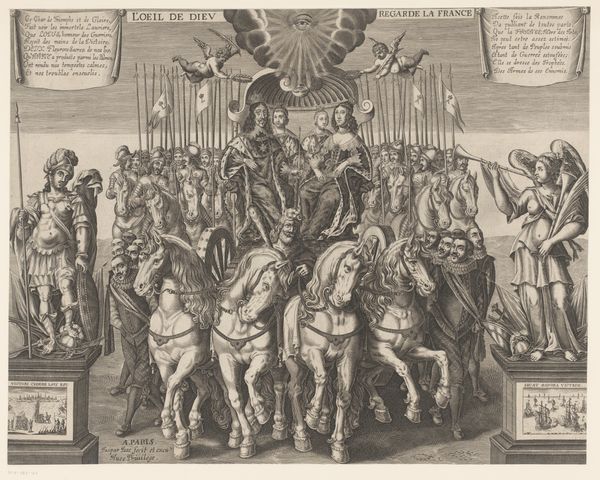
Dimensions: height 403 mm, width 513 mm
Copyright: Rijks Museum: Open Domain
Curator: This print, held at the Rijksmuseum, is titled "Trap des Levens," or "The Stages of Life," created sometime between 1642 and 1665. It is the work of Pieter Nolpe, executed in engraving and etching, and augmented with ink. Quite detailed. Editor: It is! My initial impression is one of profound melancholy. The piece really seems to embody the somber reflectivity typical of vanitas art—life, aging, mortality…it’s all very present. The greyscale palette intensifies the weighty feel, and the figure at the very bottom who's passed away…wow! Curator: Yes, and observe Nolpe's use of etching— the controlled corrosion allows for precise detail and shading, note especially the textiles and how he defines the human form at each of these ages, then augmented by hand with ink for richness and depth. The layered approach to printmaking provides both a textured visual experience and a symbolic depth through the interplay of materials. Editor: And consider the historical backdrop against which this was created. The mid-17th century Netherlands experienced immense social and economic upheaval due to the end of the Dutch Golden Age; this image captures both an intellectual response, exploring themes of life’s fleeting nature in ways we see enacted within society but also deeply personalized, as perhaps a kind of therapy. How are we seeing and facing time? What does it mean to be “moral?" It is so obviously allegorical. Curator: Precisely. Note the construction; nine stages ascending from infant to old age, arrayed atop architecture in the very center. Also notice the various methods deployed such as hatching and cross-hatching, contributing not only tonal variation but also reflecting labor-intensive means typical of production at the time and further contributing a sense of diligence. Editor: Absolutely, and Nolpe uses this constructed tower as a metaphor for social structures; the figures are placed into positions reflective of cultural values. The way each stage seems confined to its own level invites questions about the constraints of age, and expectations…it even makes me consider how we are affected or implicated based on external societal pressures and attitudes! Curator: Yes, considering all, it presents a complex relationship to its historical moment while revealing process! Editor: Definitely. And the impact? It feels enduring because it urges us to consider where we sit along that allegorical trajectory, facing the inevitable end.
Comments
No comments
Be the first to comment and join the conversation on the ultimate creative platform.

